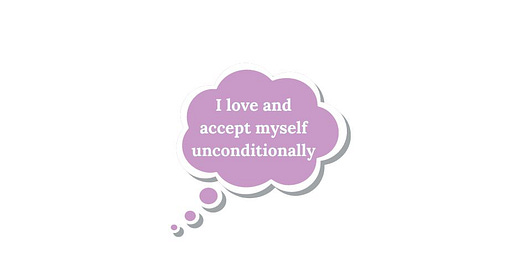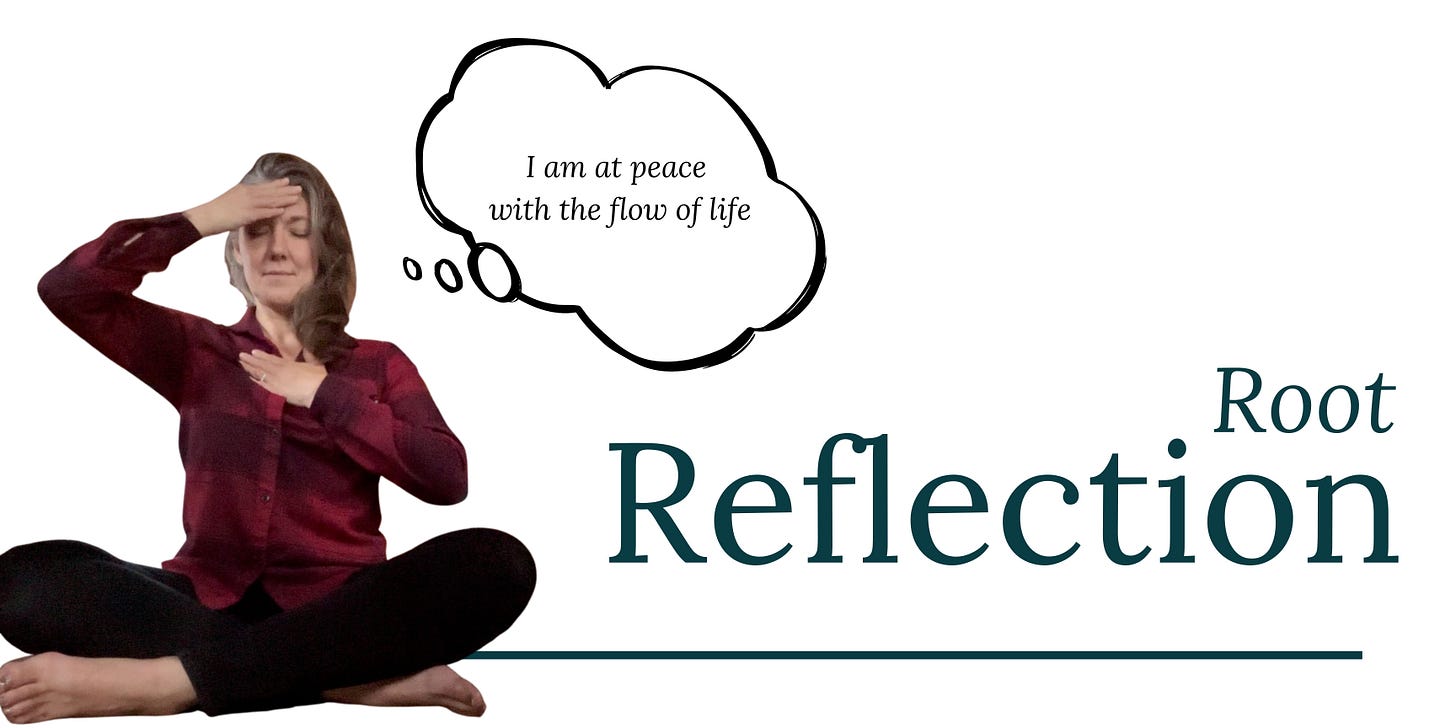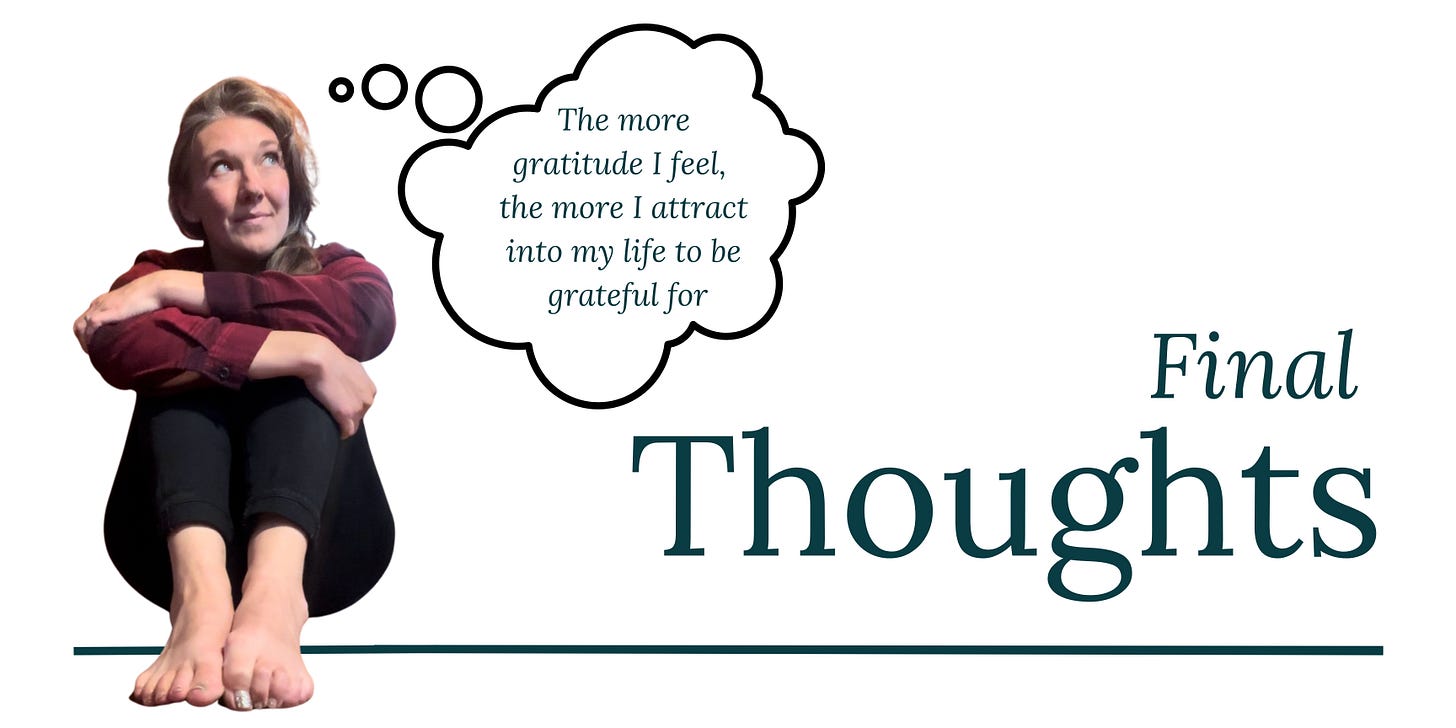Hey! It’s Jenny, your favorite Alaskan yoga teacher.
Welcome to my weekly newsletter where I share stories about my life, insights from my personal yoga practice and the best online resources, handpicked just for you.
As we enter the fourth week of the sadhana series, let’s reflect on our journey so far. We dedicated two full weeks to exploring the concept of sadhana, followed by an unplanned detour into the real-time logistics of my personal sadhana.
This week, we’re going deeper with sadhana’s secret weapon: sankalpa
You can access the first three issue of the sadhana series, and the entire Root&Rise library, in the archive on the Root&Rise homepage.
The Purpose of Sankalpa
Sankalpa is an essential element of Yoga Nidra - a practice of systematic relaxation that restores the nervous system.
When we practice Yoga Nidra, we bypass the thinking mind and relax into the subconscious. This is incredibly valuable because, while we may believe that we consciously choose our actions, it is our subconscious that often runs the show.
We all have deeply ingrained beliefs, patterns, and preferences that influence our thoughts and behaviors. How many times have you reacted to a situation in a way that surprised or disappointed you? How often does your behavior contradict your intentions? Have you ever tried to change, only to find yourself returning to old habits repeatedly?
These issues stem from unconscious patterning. Sankalpa offers a powerful way to override old, outdated patterns and reprogram our brain so we can live our lives in a positive and productive way.
In Yoga Nidra, sankalpa is a short, affirmative statement that is repeated silently three times at the beginning and end of each session. This plants seeds of change and utilizes the state of deep physical rest and high mental receptivity that we experience in Yoga Nidra.
Understanding Sankalpa
I used to think that sankalpa meant intention - a definition that isn’t necessarily wrong, just incomplete.
Sankalpa is a Sanskrit word, and Sanskrit is a complex, deeply layered language where meanings are influenced by context, cultural connections, and interpretation.
So, I think it’s best to approach the concept of sankalpa with curiosity and an open mind, not clutching too tightly to an understanding that will inevitably evolve with experience.
I’ve gathered a few interpretations that, when taken together, helped me grasp the role sankalpa plays in my personal practice, my sadhana.
Tracee Stanley defines sankalpa as “a resolve that is informed by your hearts deepest desire”. Ally Boothroyd asks us to consider what we are trying to call in to our lives when we use our sankalpa.
These two interpretations work beautifully together. Personally, my heart’s deepest desire is to be at peace and I am calling in that peace with my primary sankalpa: I am at peace with the flow of life.
Richard Miller says that “sankalpa informs us of the action we’re willing to take into the world”. Ally Boothroyd teaches that sankalpa isn’t about setting a goal, but pointing us in the direction we would like to go.
Combined, the two perspectives give meaning to another of my favorite sankalpas, “I am grateful for all the blessings in my life. The more gratitude I feel, the more I attract into my life to be grateful for”.
I am willing to take action by focusing on gratitude and that action moves me in the direction of abundance.
Sadhana & Sankalpa
If sadhana is the path to discovering our innate wholeness, worthiness, and well-being, then sankalpa is our North Star—guiding us toward our heart's deepest desires. It illuminates what we wish to bring into our lives, while empowering us with the courage to take positive action and the confidence to let go of what is no longer needed.
35 MIN. MANIFESTATION YOGA SERIES | INTENTION SETTING| YOGA TO FIND YOUR FLOW | Liza Cola
35 Minutes | All Levels (with modifications)
Whew! I was sweating when I finished this class. It was much more challenging than my normal practice and definitely not optimal for early morning, but it sure was invigorating on a restless, rainy afternoon!
I got through it by listening to my body. I modified liberally and took breaks when I needed them. I dropped my knees in (every) plank, swapped out high lunge for low lunge and rested in child’s pose when the sequence got too intense.
This class felt like a good fit for this issue because of the intention setting at the beginning. It’s a great way to start inquiring into your hearts desire, identifying what you would like to call into your life and forming your sankalpa.
Guided Meditation for Autumn // Let Go | Yoga Nidra | Yoga with Carolynne
30 Minutes | All Levels | Beginner Friendly
I practiced this Nidra on a cold, rainy morning that felt like fall. I know, I know. No one wants to hear any of that nonsense yet, but it’s true. Us Alaskans have endured a chilly summer. My bones have been telling me we’re on the cusp of autumn for a while now and i’ve even noticed a few yellow leaves.
Though it may be slightly premature, I’m glad I gave in to the cozy cravings because this Nidra aligns perfectly with the themes in this issue.
Near the end, we are given the opportunity to visualize a variety of scenarios that creates a visceral experience that serves as a powerful reminder of why we are choosing to move in a specific direction.
I like Carolynne’s patient and informative approach to sankalpa as well. She encourages exploration and offers plenty of examples. Later, she guides us back to our sankalpa in the most exquisite way. I loved it.
What is Sankalpa? | Ally Boothroyd
19 Minutes | Beginner Friendly
This was one of the videos I watched while preparing to write this issue. It is thought provoking, informative and interesting. If you would like to dive a little deeper into the concept of sankalpa, this a good little lesson.
Sankalpa is most commonly used in Yoga Nidra, but it is a powerful tool that can be incorporated into any personal sadhana practice. Use your sankalpa when you wake up in the morning, right before falling asleep at night or in your asana and meditation practices.
Play around with different sankalpas until you find one that feels right for you. You can do this by practicing a variety of Yoga Nidra classes, doing your own research online (there is an endless well of articles and ideas about sankalpa) or journaling about some of the themes from this issue.
Above all…listen. Sometimes sitting quietly and being willing to really hear what your heart wants to tell you is all it takes.
Have a good week! See you next Sunday.








I did not give myself enough time to do these practices before work today. But I did read the newsletter and listen to Ally. I LOVE Ally Boothroyd. She is who I listen to when I am doing my red-light therapy. I look forward to trying the two classes you recommend.